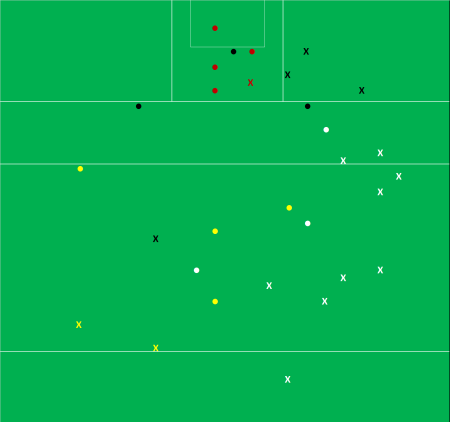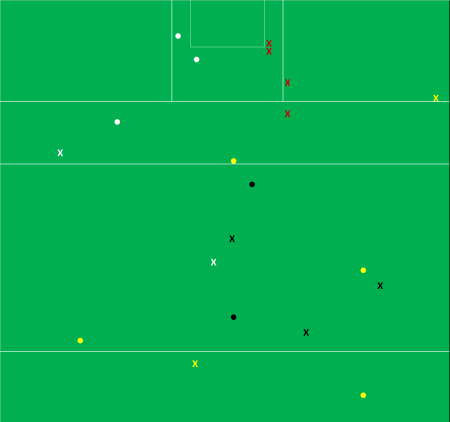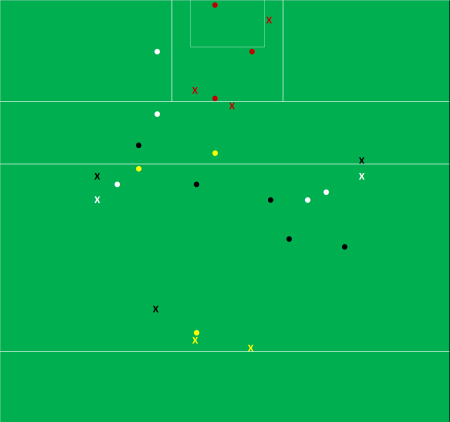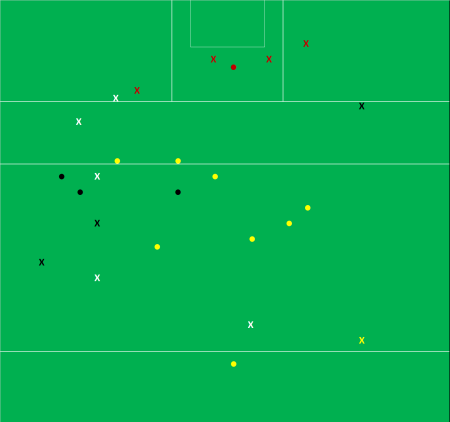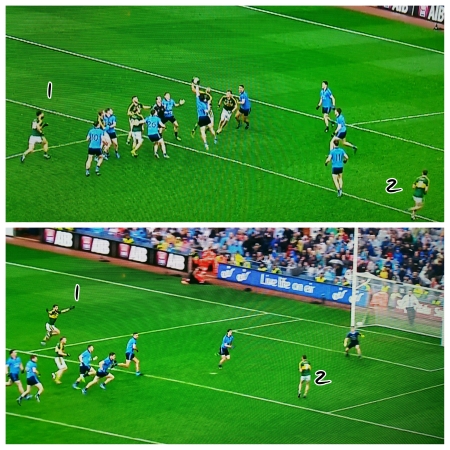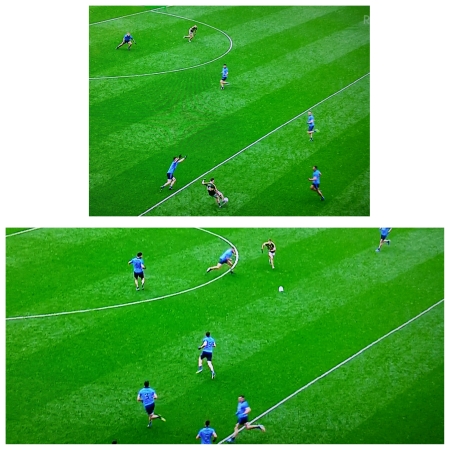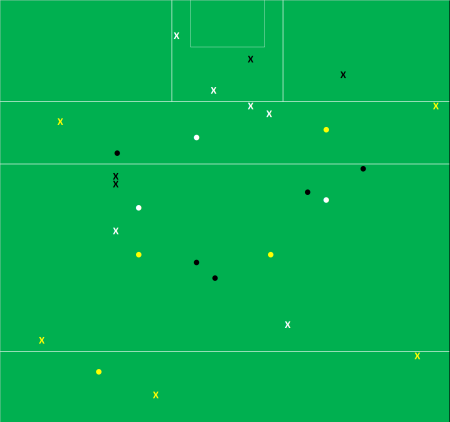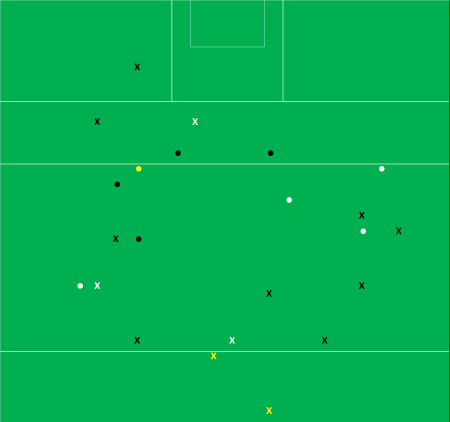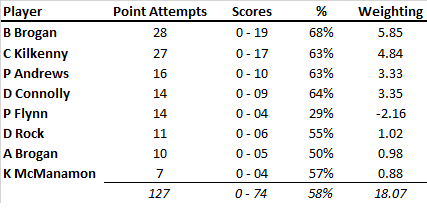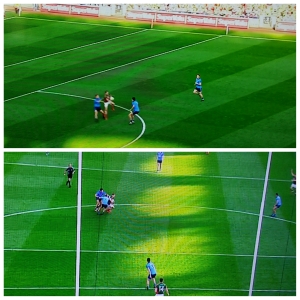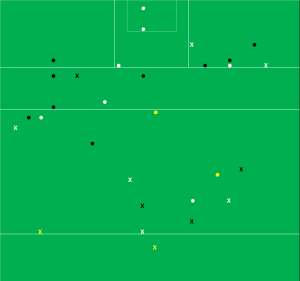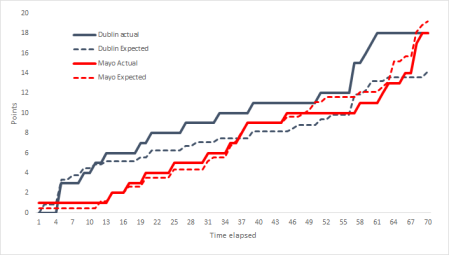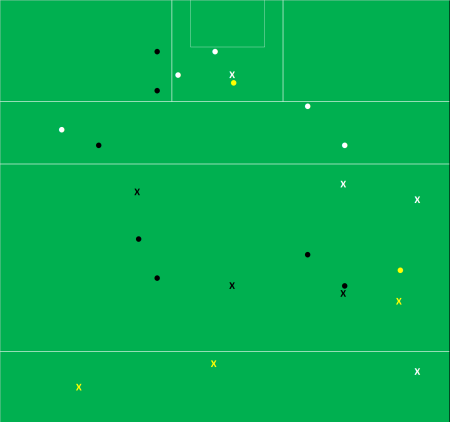2015 saw a number of very one sided games between the big 3 (Dublin, Kerry & Mayo) and the rest. Kerry’s shellacking of Kildare in the quarter finals. Dublin ripping through Leinster. Mayo destroying Sligo.
The blog, whether using weighting or expected points, has always used averages as a base. The more positive the weighting the better the team played when compared to the average. But these one sided beat downs must be affecting the averages. And if they are to what extent?
On top of just pure skill differentials there must also be something else happening in these games. How is it that a team like Kildare can beat Cork one week but lose heavily to Kerry the next? Do weaker counties play differently when facing the bigger teams? How do the big teams’ numbers compare when facing each other as opposed to the cannon fodder earlier in the Championship?
What is a Big Fish?
First we must define a big team. It would be very easy to just pick Dublin, Kerry & Mayo but we run into sample size issues when isolating games between similar teams. The semi-final replays of the last two years have helped but restricting “big teams” to the aforementioned three would leave us with only eight games over four years. To expand the big team pool all semi-finalists in any particular year are included (See Note 1 in the Appendix). This increases the volume of games between big teams to 14.
Deadballs
| Shots | Scores | Success % | Shots per game | |
| non semi-finalist v non semi-finalist | 465 | 323 | 69.5% | 6.84 |
| non semi-finalist v semi-finalist | ||||
| non semi-finalist | 358 | 241 | 67.3& | 6.75 |
| semi-finalist | 365 | 257 | 70.4% | 6.89 |
| semi-finalist v semi-finalist | 184 | 124 | 67.4% | 6.57 |
The most remarkable aspect of this table is its blandness. No matter the game type the difference in volumes of deadballs per game, and the accuracy of those deadballs, is negligible.
In a way this makes sense as there is no real outside influence when you take a free (frees make up ~85% of all deadballs so in many ways the term deadball & free are interchangeable). It is just the player and the ball; the opposition cannot influence the outcome (See Note2 in the Appendix)
What is surprising is that in games between semi-finalists & non semi-finalists the volume of shots is the same. Yet we know that the volume of attacking play is heavily weighted in favour of the semi-finalists. In 12 games of this nature (semi-finalist v non semi-finalists) this year the semi-finalists averaged 41 attacks whilst the non semi-finalists averaged 32. The volume of deadballs has stayed steady over the years meaning that the semi-finalists gave up a deadball shot every ~4.7 attacks; the non semi-finalists were at ~6.1.
Now maybe this is due to better attacking play from the semi-finalists, enabling them to avoid getting caught in possession, but equally it could be the better teams fouling early to get back into position and/or stop a goal threat. Or maybe it’s just sympathetic referees in blow outs! But whatever the reason the better teams do foul at a higher rate when faced with inferior opposition.
For point from play
| Shots | Scores | Success % | Shots per game | |
| non semi-finalist v non semi-finalist | 1,214 | 544 | 44.8% | 17.85 |
| non semi-finalist v semi-finalist | ||||
| non semi-finalist | 847 | 338 | 39.9% | 15.98 |
| semi-finalist | 1,156 | 598 | 51.7% | 21.81 |
| semi-finalist v semi-finalist | 533 | 257 | 48.2% | 19.04 |
The deadball overview may have been unremarkable – this is another beast entirely.
- Non Semi-Finalists
When playing each other non semi-finalists converted point attempts at 45%. This dropped to 40% when playing semi-finalists. The volume of shots also dropped by ~10%.
The deadball returns showed that all things being equal there are no real differences when comparing the various game types. Things are not equal here however as the opposition has a huge bearing on your returns.
But how does that manifest itself in terms of the reduced accuracy noted above? There are two main elements that have been tracked to date (there are others!) where the opposition can have an impact on your shooting – where the shot is taken from and whether the shot is taken under pressure.
Non semi-finalists’ % of all shots taken
| Outside 45 | 4 | 5 | 6 | 7 | 8 | 9 | |
| v non semi-finalists | 2% | 24% | 25% | 16% | 13% | 11% | 9% |
| v semi-finalist | 3% | 26% | 23% | 16% | 14% | 11% | 8% |
Nothing to see here. Irrespective of opponent non semi-finalists’ shooting tendencies remain constant. Remarkably so.
All teams – frequency & impact of pressure
| Pressure applied | Success % | Pressure applied | Success % | |
| non semi-finalist v non semi-finalist | 53% | 42% | 47% | 48% |
| non semi-finalist v semi-finalist | ||||
| non semi-finalist | 57% | 38% | 43% | 42% |
| semi-finalist | 47% | 48% | 53% | 55% |
| semi-finalist v semi-finalist | 48% | 43% | 52% | 53% |
If the lower conversion rates are not due to shot location are they impacted by pressure? As expected semi-finalists do manage to pressure more shots than non semi-finalist in games between the two – 57% v 47%.
That however does not tell the whole story. “Pressure” is recorded as a binary “yes/no”. The *type* of pressure – be that multiple players, or tighter marking from better defenders – is not accounted for. That, on top of the mere presence of extra pressure, could easily be responsible for the drop in the overall Conversion Rate from 45% to 40%.
What’s really interesting though is what happens when there is no pressure applied. You would think, both from a logical standpoint as well as from the results observed in deadball situations, that the returns here would be similar irrespective of the opponent. There is no outside influence. But in contests against other non semi-finalists, where no pressure was applied, players had a return of 48%. In the same scenario against semi-finalists the return dropped to 42%. That’s a bigger drop off than when pressure is applied (see Note 3 in the Appendix)!
- Semi-finalists
The fact that something “strange” is happening with non semi-finalists is further confirmed when we look at the semi-finalists. As expected there is little difference in the returns when no pressure is applied; against non semi-finalists they convert 55% and against other semi-finalists they convert 53%. The difference is well within any margin of error.
The earlier point re the type of pressure being different is also underlined. Semi-finalists, when facing non semi-finalists convert 48% of shots taken under pressure. Against other semi-finalists that becomes 42%. The assumption again being that the drop off is due to the *type* of pressure being applied by the better teams.
Goal Attempts
| Shots | Scores | Success % | Shots per team | pts per attempt | |
| non semi-finalist v non semi-finalist | 141 | 55-16 | 39.0% | 2.14 | 1.28 |
| non semi-finalist v semi-finalist | |||||
| non semi-finalist | 118 | 31-12 | 26.3% | 2.23 | 0.89 |
| semi-finalist | 219 | 96-14 | 43.8% | 4.13 | 1.38 |
| semi-finalist v semi-finalist | 82 | 34-08 | 41.5% | 2.93 | 1.34 |
The same patterns observed when attempting a point are observed when going for a goal.
For non semi-finalists the accuracy plummets as the opposition quality increases. For semi-finalists the accuracy is more or less maintained but they manage ~50% more goal attempts per game when facing non semi-finalists.
Based purely on point taking ability and volumes (we’ll take deadballs as a wash) the big fish of this piece have about a five point head start. That grows out to ~8.5 points once we bake in goal attempts. That is a huge gap to plug but the little fish of this piece are not helping themselves. Too many of their own shots are taken under pressure whilst they are also allowing their goal to come under siege. That’s not to mention malfunctioning when under no pressure. Nor the unedifying thought that they are not cynical enough and should be following the big fish’s lead and fouling more.
Appendix
Note 1: The big fish are thus
2012 games; Cork, Donegal, Dublin & Mayo
2013 games; Dublin, Kerry, Mayo & Tyrone
2014 games; Donegal, Dublin, Kerry & Mayo
2015 games; Dublin, Kerry, Mayo & Tyrone
There is an argument to be made that the non semi-finalists – the “little fish” of the piece – needed to be further subdivided whether that be by league position, losing quarter finalists or some subjective manner. Lumping the Cork & Monaghans of this world in with the Leitrim & Longfords is not fully representative. This is accepted but again we run into sample size issues.
Still to be honest I nearly did it anyway so that I could use the “big fish”, “little fish” and “cardboard box” nomenclatures. Next time.
Note 2: Not strictly true I guess as the opposition can – in many cases – choose where to foul and thus impact the outcome of those frees. Where deadballs attempts originated from in games between semi-finalists & non semi-finalists are listed below.
| Outside 45 | 4 | 5 | 6 | 7 | 8 | 9 | |
| v non semi-finalists | 13% | 18% | 20% | 18% | 5% | 19% | 7% |
| v semi-finalist | 10% | 19% | 25% | 17% | 6% | 18% | 5% |
The semi-finalists do get more shots off from Sector5 whilst giving up more outside the 45. This could be used to support the “clever” fouling argument in that they are fouling earlier to protect the defence. It could also be the case that the weaker teams take whatever opportunity they get so have more long range attempts.
This is the only real difference however. Generally speaking teams foul in the same areas.
Note 3: The sample size here is robust (~950 shots) so the issue is real. Pressure is a nebulous thing – one man’s pressure is another’s lazy arm – so consistency in the definition could definitely be an issue. There is however only one source tracking the games so we have to assume there is consistency.
Other issues like game state (more pressure on shots in closer games), game type (semi-finalists by nature are meeting in bigger, more pressurised games) or pitch (shooting in Croke Park into the hill against the Dubs vs Clones perhaps) will all have an undetermined effect.
